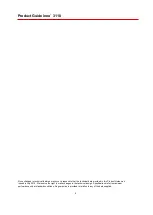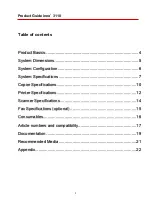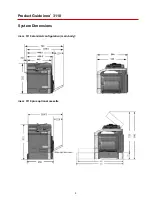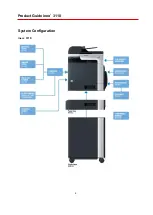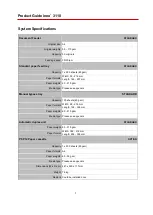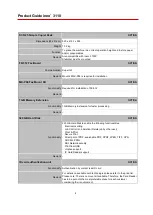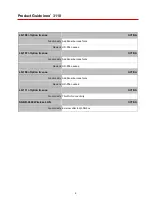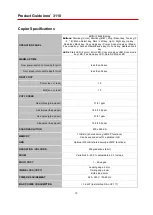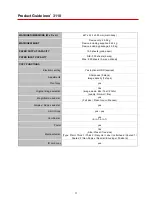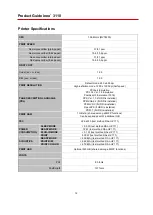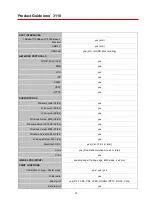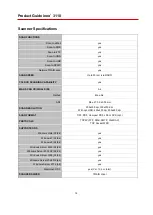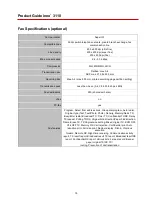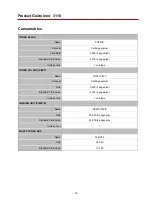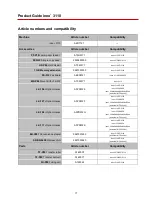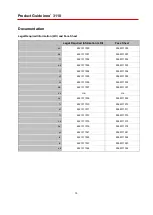
4
Product Guide ineo
+
3110
Product Basics
MODEL NAME
ineo+ 3110
MODEL DEVELOPMENT CODE
Citrine-S AIO
SUCCESSOR MODEL FOR
ineo+ 25
ALSO AVAILABLE AS
DEVELOP ineo+ 3110
Olivetti d-Color 3100
ESTIMATED SALES START
08/2014
INFOSOURCE SEGMENT
Colour A4 segment IV (30-49 ppm)
RECOMMENDED MONTHLY PAGE
VOLUME
6,500
EXPECTED MONTHLY PAGE
VOLUME (COLOUR/MONO)
500 / 2,000
MAXIMUM MONTHLY PAGE VOLUME
120,000
(If the maximum volume is reached within a period of one year, then a maintenance cycle
must be performed.)
MACHINE LIFE
400,000 or 5 years
(whichever comes first)
MCBF (Mean
Copies Between
Failure)
Total
Colour
Mono
24,716
14,500
30,000
MCBJ (Mean Copies Between Jam)
≥ 5,000 (with standard paper)
STANDARD COPY MODE (MONO &
COLOUR)
3 pages/job
STANDARD ORIGINAL DENSITY
5% Mono & Colour
SAFETY & ENVIRONMENT
Downloadable in the dbox:
dbox/Support/CS Expert Support (CSES)/Download / KNOVA Self
Service (OCP) / Select the Product….
PLEASE NOTICE
Standard paper weight for systems is 80 g/m
2
for monochrome machines and 90 g/m² for full colour machines. Since using these standards result
in optimum system performance, all specifications on performance, reliability, maintenance and replacement based on those standard papers.
Using thick papers, labels, transfer and polyester films continuously can increase the wear and tear on replacement parts and consumables
–
meaning your servicing costs will go up. Use the bypass or the lower tray from the paper feed unit when working with materials having such
characteristics as polyester films, textile transfer films and labels. Otherwise, you may be faced with double feeding or a higher number of feeding
jams. If possible use subtray when working with materials having such characteristics as polyester films, textile transfer films and labels.
Rollermarks on the copy or print may appear or increased jams can occur. Standard paper weights yield the best possible copy and print results.
Using higher grammatures may influence the quality of the output. Using standard paper weights also guarantees that double sided copies and
prints are made reliably. Different characters of films as well as thick, thin and coated papers may increase the jam rate for double sided copies
and prints.


